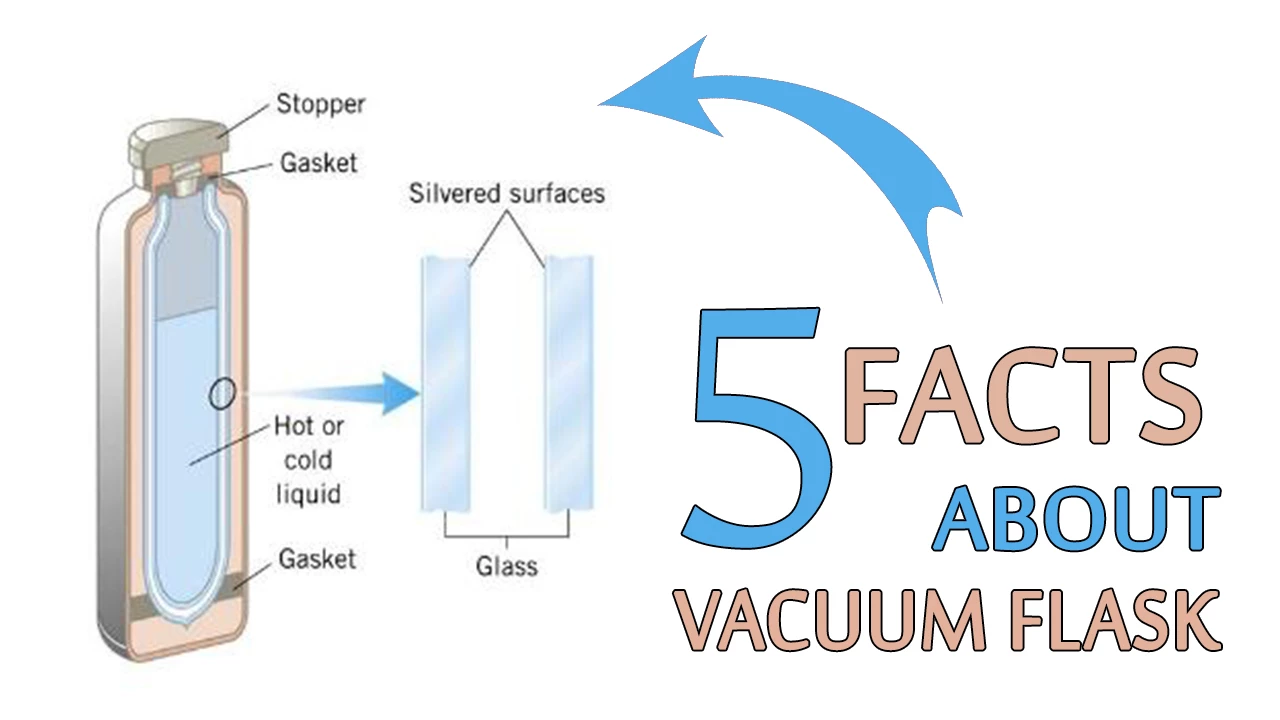Vacuum-insulated bottles have simple heat keeping principle but special structure
A thermos bottle is a device capable of keeping the temperature of food and drinks, ensuring the original integrity for 12-24 hours depending on the quality of each bottle as well as the production technology. Vacuum-insulated bottles are currently being used by many, especially students and office workers thanks to their compactness, convenience and safety. Let’s find out in the article below.
Structure principle
Thermos types, thermos flasks for food or tea and thermostats are all produced based on the principle of heat balance. Heat transfers itself from an object with a higher temperature to another object with a lower temperature:
- Heat transfer occurs until the two objects have equal temperature, then stops.
- The heat generated by one object is equal to the heat collected by the other.
The principle of heat transfer.
When we store hot/cold water in a bottle, the temperature in the bottle will be different from that of the ambient air. Given the difference, heat transfer principle takes place until the water in the vessel reaches a temperature equilibrium with the ambient temperature.
The thermos flask is built based on this principle, reducing the temperature difference between the water tank and the environment, helping slow the heat exchange process to keep the water in the bottle hot/cold longer.
Vacuum-insulated bottles keep heat based on the principle of heat transfer.
The thermosetting structure of vacuum-insulated bottles
The first is the body design
The thermos flask capable of keeping heat for a long time usually has three layers of body: shell (plastic or stainless steel) - vacuum insulation - the inner layer made of stainless steel (201 or 304) or glass refill.
The thermos design increases heat retention.
It is the vacuum insulation layer that works to reduce the temperature difference in the thermos flask in relation to the outside environment, thereby prolonging the time of "temperature preservation".
Stainless steel also gives a good heat retention effect, helping increase the product's ability to keep heat while ensuring safe contact with food.
In addition, the bottle body design with an elongated shape helps narrow the air contact surface of the food stored inside, thus effectively raising the ability to retain heat.
Bottle cap
Vacuum-insulated bottles provide good heat retention thanks to its sealed lid design. Good-quality vacuum-insulated bottles are usually two-tiered, with a primary plastic inner lid and a rubber (or silicone) seal to help tighten the bottle mouth, preventing the inner air from escaping.
Here is the structure of the thermos cap.
The bottle warmer is only used to keep the heat in normal drinking water or other foods?
Users often want to take advantage of the thermosetting ability to keep hot or cold not only drinking water but also juice, coffee, tea, porridge or soup.
Rang Dong’s vacuum-insulated bottles
The type with a stainless steel structure - vacuum layer - stainless steel or glass refill is capable of retaining the heat of the food poured in at 100 degrees Celsius for 8-24 hours. The price of this type is usually a few hundred thousand Vietnamese dong, or several tens of U.S. dollars.
Another type has the inner layer material coated with silicone for better heat retention function (up to 48 hours). This type is only used with water and hot food below 70 degrees C, and its price is relatively high, from a few hundred thousand to a million of Vietnamese dong (up to US$ 43), but it is not very popular.
Should you have any questions, wish to share your ideas about vacuum flasks or or request a quotation, please send us an email to: export@rangdong.com.vn
Our website: https://vacuumflask.rangdong.com.vn/









